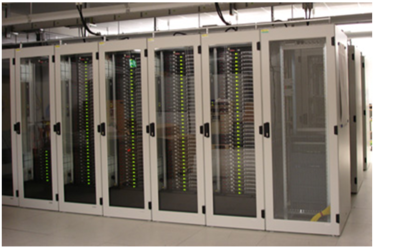Bioinformatics Platform
Our scientific strategy entails extensive use of high content screening and modelling of complex systems, ranging from biological processes to molecular structures. These activities generate a huge amount of data that need to be analysed, transferred, stored, archived and made accessible for sharing. For these reasons, the Bioinformatics Platform occupies a central role in the programme BIFTM by providing custom-made infrastructure solutions and software development.

The Bioinformatics Platform fulfills its mission to support the programme with the development of tailor-made bioinformatics solutions for the efficient processing, storgae and retrieval of data. This ranges from algorithms for image analysis to the in depth analysis of data generated by the OMICS Platform. For more challenging screening or imaging projects, theses developments are integrated into the concerted efforts of the Imaging and Screening Hubs and in collaboration with the Cross-Programme Initiative Large-Scale Data management and Analysis (LSDMA). In addition, bioinformatics solutions we have developed have been used in many clinical applications with external partners.
Particular achievements include the development of a pipeline for the analysis of DSLM data (see above). In this context, we have developed a kinetic digital model of the zebrafish embryo up to 16 h of development. This model, which describes the behaviour of each and every cell during devlopment, is based on the precise overlay and averaging of data acquired from multiple individuals. Quantitative metrics for multi-sample comparative studies have been introduced to analyse possible individual devlopmental variation. The digital model may serve as a canvas on which the behaviour of cell populations can be studied. As an example, we have investigated cellular rearrangements during germ layer formation at the onset of gastrulation. A comparison of the one-eyed pinhead (oep) mutant with the digital model of the wild-type embryo reveals its abnormal development at the onset of gastrulation, many hours before changes are obvious to the eye.
The Platform has devloped a sophisticated pipeline for the analysis of large multidimensional imaging data sets. Importantly this has been made available as an open source resource called the Insight Toolkit (ITK). Software and documetation are licensed under the GNU-GPL and are publicly available for download at https://bitbucket.org/jstegmaier/xpiwit/downloads/. This toolkit, available for both Windows and Unix-based systems, offers the community a number of features for complex image analysis.
